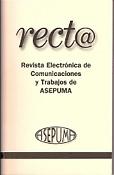An estimation of the industrial production dynamic in the MERCOSUR countries using the Markov switching model
DOI:
https://doi.org/10.24310/recta.20.1.2019.19895Keywords:
Markov Switching Models, Algorithms Monte Carlo Markov Chains,, Industrial Production in MERCOSURAbstract
In this work the methodology applied is based on Bayesian statistical methods inspired by Markov chain Monte Carlo sampling schemes, which simplifies the estimation and prediction process of the Markov switching model. The general objective of this study is to determine simultaneously: non-linearity, structural changes, asymmetries and outliers that are characteristics present in many financial series. The methodology is empirically illustrated using series that measure the annual growth rate of industrial production in the MERCOSUR countries. The sampling algorithm [1] is implemented to estimate the parameters of the model. The parameters were estimated in terms of expected values a posteriori and standard deviations a posteriori. Three criteria is used to assess the prediction model: square root of the mean quadratic error (RSME), the Diebold-Mariano (DM) test and the TRC statistical test. These measures of goodness-of-fit show, that the estimates have small errors. The execution time of the algorithm is calculated, observing high performance. As a result of the analysis of the data, it is concluded that there is no reduction of economic volatility and no reduction in the depth of economic cycles. At the breakpoints, atypical values and non-linearity in the data are observed. It also shows that there are no common economic cycles for the countries analyzed.
Downloads
Published
How to Cite
Issue
Section
License

This work is licensed under a Creative Commons Attribution-NonCommercial 4.0 International License.





